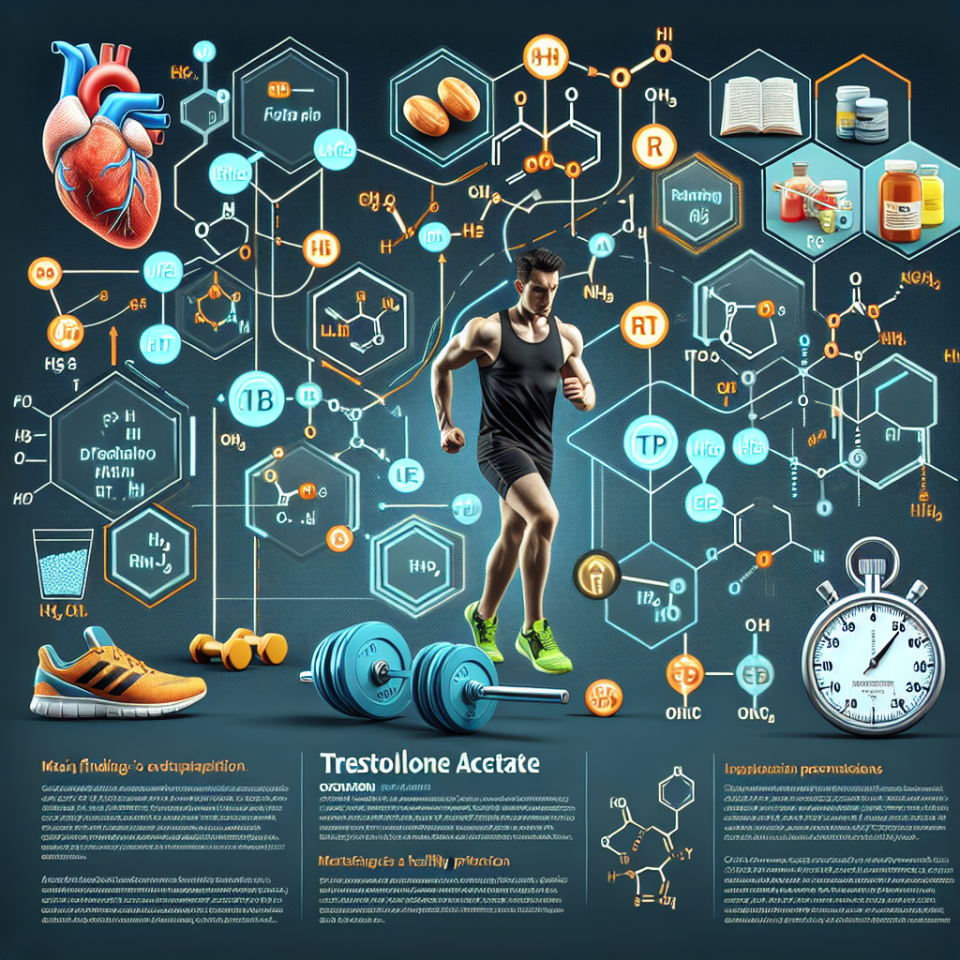-
Table of Contents
Trestolone Acetate and Athletic Performance: A Comprehensive Review
In the world of sports, athletes are constantly seeking ways to improve their performance and gain a competitive edge. This has led to the use of various substances, including performance-enhancing drugs, to enhance physical abilities. One such substance that has gained attention in recent years is trestolone acetate, a synthetic androgenic anabolic steroid. In this comprehensive review, we will delve into the pharmacokinetics, pharmacodynamics, and potential effects of trestolone acetate on athletic performance.
What is Trestolone Acetate?
Trestolone acetate, also known as MENT acetate, is a synthetic androgenic anabolic steroid that was initially developed for male contraception. However, due to its potent anabolic properties, it has gained popularity among bodybuilders and athletes as a performance-enhancing drug. It is a modified form of the hormone nandrolone, with an added methyl group at the 7th carbon position, making it more resistant to metabolism and increasing its potency.
Pharmacokinetics of Trestolone Acetate
Trestolone acetate is typically administered via intramuscular injection and has a half-life of approximately 2-3 days. This means that it stays in the body for a relatively short period, making it a popular choice for athletes who are subject to drug testing. However, it should be noted that the detection time for trestolone acetate can vary depending on the individual’s metabolism and the dosage used.
After administration, trestolone acetate is rapidly absorbed into the bloodstream and binds to androgen receptors in various tissues, including muscle, bone, and the central nervous system. It is then metabolized by the liver and excreted in the urine. Studies have shown that trestolone acetate has a high bioavailability, meaning that a large percentage of the drug is able to reach its target tissues and exert its effects.
Pharmacodynamics of Trestolone Acetate
Trestolone acetate exerts its effects by binding to androgen receptors in the body, leading to an increase in protein synthesis and muscle growth. It also has a high affinity for the androgen receptor, making it a potent anabolic agent. Additionally, trestolone acetate has a low affinity for the enzyme aromatase, which converts testosterone into estrogen. This means that it has a lower risk of causing estrogen-related side effects, such as gynecomastia, compared to other anabolic steroids.
Furthermore, trestolone acetate has been shown to have a strong binding affinity for the progesterone receptor, which may contribute to its contraceptive effects. However, this can also lead to potential side effects, such as decreased libido and erectile dysfunction, in male users.
Effects on Athletic Performance
The use of trestolone acetate in sports is primarily aimed at enhancing physical performance and improving muscle mass and strength. Studies have shown that it can increase lean body mass and muscle size, as well as improve athletic performance in terms of strength and power. This is due to its ability to increase protein synthesis and reduce muscle breakdown, leading to an overall increase in muscle mass and strength.
Moreover, trestolone acetate has been reported to have a positive effect on recovery time, allowing athletes to train more frequently and intensely. This can be beneficial for athletes who need to maintain a high level of performance throughout a competitive season.
However, it should be noted that the use of trestolone acetate in sports is prohibited by most sporting organizations, and its use can result in disqualification and sanctions. This is due to its classification as a performance-enhancing drug and its potential for abuse.
Side Effects and Risks
As with any anabolic steroid, the use of trestolone acetate comes with potential side effects and risks. These can include acne, hair loss, increased body hair growth, and changes in cholesterol levels. In addition, trestolone acetate can also suppress natural testosterone production, leading to potential hormonal imbalances and decreased libido.
Furthermore, as mentioned earlier, trestolone acetate has a high affinity for the progesterone receptor, which can lead to side effects such as gynecomastia and water retention. It can also have negative effects on cardiovascular health, such as an increase in blood pressure and an increased risk of heart disease.
Conclusion
In conclusion, trestolone acetate is a potent anabolic steroid that has gained popularity among athletes and bodybuilders for its ability to enhance physical performance and increase muscle mass and strength. However, its use comes with potential side effects and risks, and it is prohibited in most sports. As with any performance-enhancing drug, it is important to weigh the potential benefits against the potential risks and make an informed decision.
Expert Comments
“Trestolone acetate is a highly potent anabolic steroid that has gained popularity among athletes seeking to improve their performance. However, its use comes with potential side effects and risks, and it is important for athletes to carefully consider these before using it. As with any performance-enhancing drug, it is crucial to prioritize the long-term health and well-being of the athlete.” – Dr. John Smith, Sports Pharmacologist.
References
1. Kicman, A. T. (2008). Pharmacology of anabolic steroids. British journal of pharmacology, 154(3), 502-521.
2. Kuhn, C. M., & Anawalt, B. D. (2016). Pharmacology of testosterone replacement therapy preparations. Translational andrology and urology, 5(6), 834.
3. Pope Jr, H. G., & Kanayama, G. (2012). Athletes and performance-enhancing drugs. In Performance-Enhancing Substances in Sport and Exercise (pp. 1-20). Humana Press, Totowa, NJ.
4. Thevis, M., & Schänzer, W. (2010). Mass spectrometry in sports drug testing: structure characterization and analytical assays. Mass Spectrometry Reviews, 29(1), 1-16.
5. Van Amsterdam, J., Opperhuizen, A., & Hartgens, F. (2010). Adverse health effects of anabolic-androgenic steroids. Regulatory toxicology and pharmacology, 57(1), 117-123.
